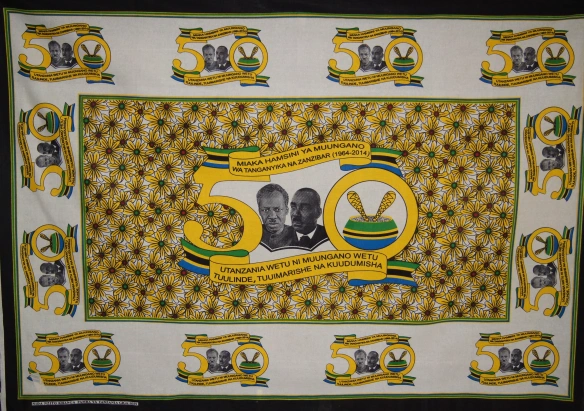The expression of the kanga and the liberation of the Swahili women within colonial 19th century Zanzibar
- Team Mukakasa
- Mar 3
- 3 min read
The kanga was born in the Swahili East Coast of Africa in the small archipelago of Zanzibar. Where the kanga was seen as a form of revolution for the former enslaved Swahili women. This vibrant rectangle cloth represented their fight for freedom, shedding the shackles of their enslavement and the social stigma engraved within the cast society. The free Swahili identity represented the unification of women, and the power textiles hold within our culture and self-identity.

The abolishment of Slavery within East Africa took place in 1897. Newly liberated women at the time did not have access to the enriched, embellished textiles the upper-class Arab/ Indian descendants had, which meant the only textiles available to them was one of their enslaved pasts, the plain white cotton cloth. This was an issue for the freed women of post abolition East Africa, the stigma and weight this simple fabric carried oppressed their liberation and put them at a disadvantage in British occupied Zanzibar. Within the stigma the plain cotton cloth carried, the liberated Swahili women took their power back and started decorating these clothes with motifs and colour’s created from natural dyes (henna and mdaa trees) drawing inspiration from the women of court. A revolution of sorts.

The kanga, much like the bird it's named after, is often bold in its colour and striking in design. It’s a rectangular piece of cloth, traditionally measuring about 150 cm by 115 cm, and adorned with colorful patterns and a Swahili proverb .Proverbs were introduced in the kanga culture in 1930, when a cloth trader Haji Essak Abdulla Kaderdina in Mombasa, Kenya saw the influence the kanga and spoken proverbs held in Swahili culture. Creating the modern-day kanga, depicting a proverb in the border of the textile. These proverbs held weight and represented unspoken words directed to society and challenged the oppression of freedom of speech for women, rebelling the gender-based decorum. As through the Islamic societal expectation of women at the time, presented them to be soft spoken, unopinionated and obedient. “Sitajali kuumia mengi nimevumilia” - I don’t mind getting hurt (again), for I have (already) put up with a lot. An example of a proverb which depicted the weight the kanga held, showcasing The power of the kanga didn’t just reside in its aesthetic beauty; it was deeply embedded in its function as a symbol of resistance.

Furthermore, the kanga also became an important item in post-slavery resistance movements in Africa. As colonial powers took over many African countries, including those in East Africa, the kanga became a symbol of African pride and independence. During the struggle for independence in Tanzania, political leaders and activists used the kanga as a tool of unity. Leaders like Mwalimu Julius Nyerere, the first president of Tanzania, wore the kanga as a representation of solidarity with the common people, recognizing its importance not only as a cultural symbol but as a tool in the fight for freedom.
Today, the kanga is still a prominent part of East African culture and beyond. It is worn at weddings, funerals, and other important cultural events. The kanga continues to carry its original significance as a symbol of identity, cultural pride, and social standing. For many, wearing the kanga is an expression of solidarity with East African heritage and a celebration of resilience in the face of historical adversity.
Modern-day kangas are still adorned with proverbs and sayings that reflect the values of the community. Some have become more political in nature, with slogans calling for justice, equality, and freedom. The fabric’s significance has expanded from personal expression to include social commentary, with people using it to make statements about political or social issues in contemporary East African society.

The kanga is more than just a piece of cloth. Its vibrant colours and patterns tell a story of survival, resistance, and cultural pride that dates back to colonial Zanzibar. During this time, the kanga held a quiet but powerful role in the lives of the free Swahili women, offering a means of communication, resistance, and a connection to their East African roots. The kanga stood as a testament to the strength, resilience, and ingenuity of the Swahili people. Today, it remains a cherished symbol of cultural identity, defiance, and empowerment.













Comments